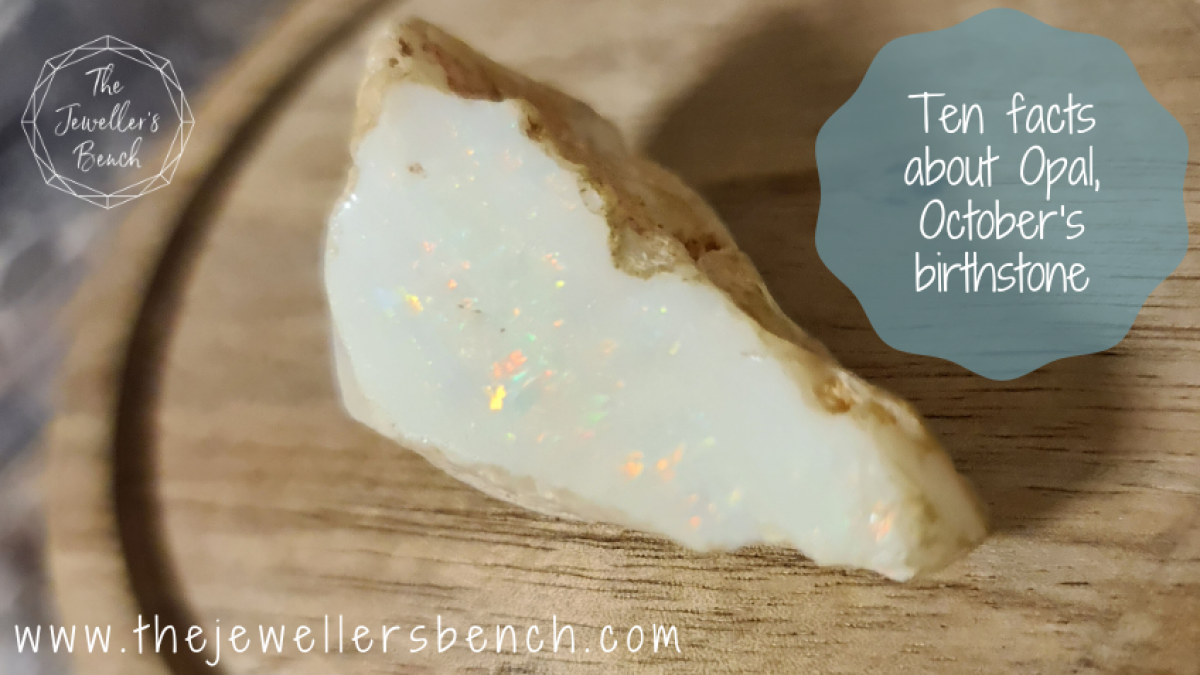Ten facts about Opal, October's birthstone

October's birthstone is a shimmer of wonderful colours and has been loved for thousands of years. Read on to find out more about wonderful Opal.
October's birthstone is a shimmer of wonderful colours and has been loved for thousands of years.
Read on to find out more about wonderful Opal.

1. There are disagreements about the origin of name Opal, with some sources saying it comes from the Greek word "Opallios" and others arguing that it comes from the Latin “Opalus”, both of which mean "to see a change of colour". Both are probably true, and both most likely originally got the name from derived from the Sanskrit upala (उपल), which means "jewel".
2. Opal is formed from rain. We don't know exactly how, but scientists believe it is formed when rainwater seeps down into crevasses in rocks and fossils. Once the water evaporates, the silica that is left behind dries out and hardens into precious opal. The play of colour you see in Opal is due to the refraction of light from millions of tiny silica spheres of different sizes.
3. However, the ancient Greeks believed that opals were formed from the tears of joy wept by Zeus when he defeated the Titans, and that the opals formed bestowed prophetic powers.
4. Australian native Aborigines tell us that opal is our creator’s footprint, and that it touched the Earth at the base of a rainbow to bring harmony.

5. Opal is found around the world, including in Brazil, Mexico, Honduras and the western USA. However Australia produces around 95% of the world's opals, and it is the country's national stone. The majority is white Opal from the fields of Coober Pedy in South Australia.
6. It was the Romans who first popularised opals. The iridescent, many-colored gem was called the “queen of gems” in Ancient Rome.
7. Mark Antony loved opal. Pliny wrote that Antony coveted an opal owned by Senator Nonius and wanted to gift it to Cleopatra. He offered the Senator 20,000 sesterces (hundreds of thousands of dollars today) for the almond-sized stone - and then banished him from Rome when he refused to sell!
8. Opals were Queen Victoria’s favorite gemstone. She often gifted opal jewellery to her daughters and friends.

9. Boulder opal is a rock that contains thin seams and segments of opal. It most commonly forms in ironstone, basalt, rhyolite, andesite, quartzite and sandstone, and the opal and host stone are cut together. In the pendant above the warm ironstone contrasts beautifully with the flashes of opal.
10. Black opal is the rarest and highly valued form of opal. It is not solid black but has a black (or dark) body tone that makes the play of colours across the stone seems even more rich and intense. Black opal is found in Lightning Ridge, New South Wales, Australia
11. And as a bonus... the most valuable black opal is the Aurora Australis, found in the Bald Hill Workings mine in Lightning Ridge, New South Wales in 1938. It weighs 180 carats, measures 3 inches by 1.8 inches, and it is the size of the stone and the vibrant reds, greens and blues that make it so valuable.
Want to find out more about using gemstones in your jewellery?
Here are some useful blog posts and tutorials.
Categories: : birthstones, did you know, jewellery facts

Joanne Tinley
Tutor and Founder of The Jeweller's Bench
The Jeweller's Bench is run by Joanne Tinley. She has been making her own jewellery for as long as she can remember and left her first career as a school teacher to set up business as a jewellery designer and tutor nearly 20 years ago. She is
self-taught and like many people started with wire and beads. Learning how to solder, however, opened up a whole new world of jewellery making, one that she is keen to share!
 Joanne Tinley
Joanne Tinley 



